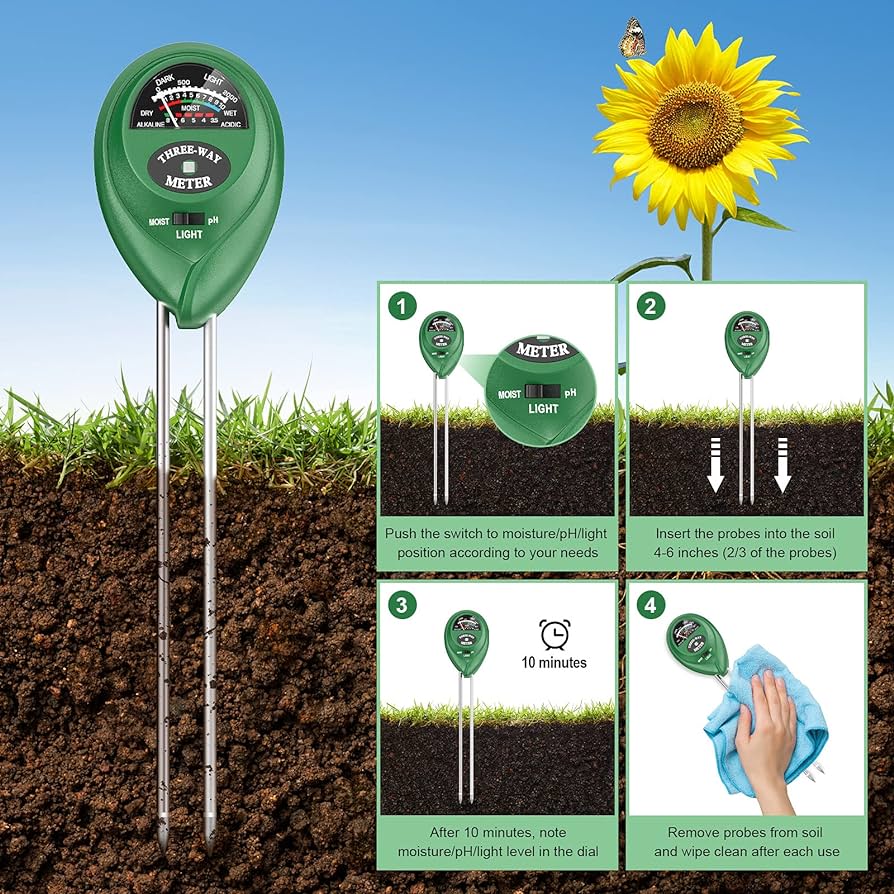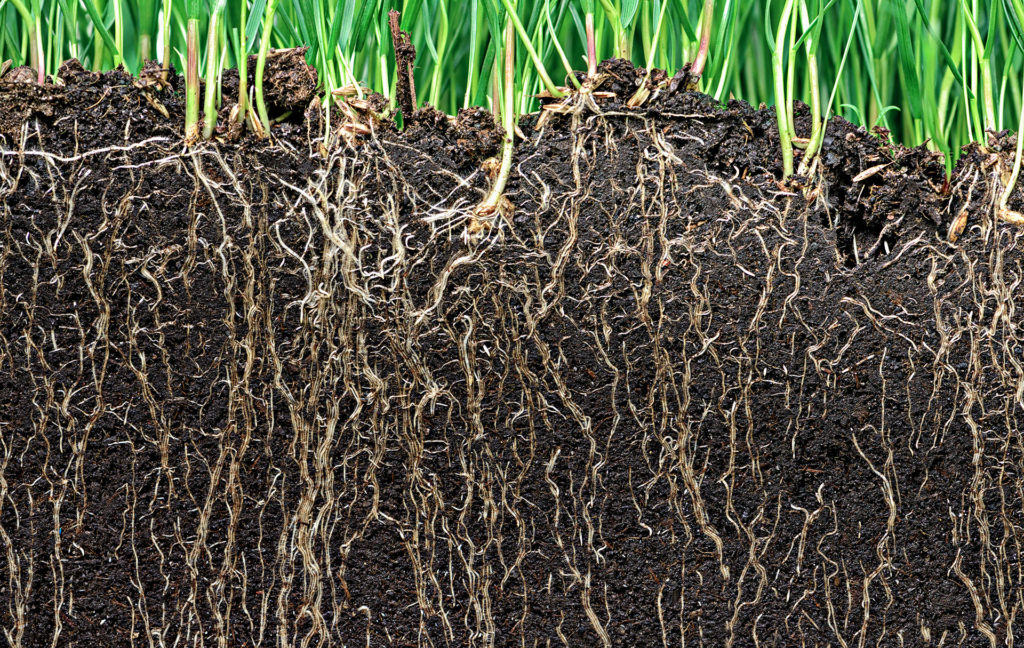Step 1: Test Your Soil
The first step we recommend is testing your soil—before you apply chemicals to kill off your old grass and before you install the new sod. Your soil’s health is what determines the overall health of your grass. Working from the ground up is the best way to ensure superior grass quality.
It also helps balance your soil’s pH so that when you apply nutrients found in fertilizers, your grass is able to actually absorb them. In other words, if your soil’s pH is off, nutrients won’t be absorbed as effectively, meaning the fertilizer you apply may be a waste of money.
Taking a soil analysis and sending it to a laboratory is affordable but typically takes about two weeks to complete, depending on where you send it. Keep this timeframe in mind before installing sod so that you have enough time to receive results and determine what your soil needs.
Step 2: Measure Your Planting Area
The third step involves finding out how much sod you will need to order. We recommend using https://greengrasssodfarms.com/area-calculator to draw and measure how much surface area you’ll need to cover and determine how much sod you’ll need to purchase.
- Start by entering your address.
- Draw an overlay shape for where you plan to install new sod.
- You can now move forward with this square footage number and request a quote.
Step 3: Kill and Remove Old Grass
Before installing new sod, it’s essential to clear the area of any currently existing grass, vegetation, or debris in the area you want to replace with new sod. This should be done AFTER a soil test. Killing the grass first makes it significantly easier to remove.
The difference between a selective and a non-selective herbicide is that a non-selective herbicide kills all vegetation it comes in contact with—so be careful not to get it on any desired shrubs, trees, or your garden. A selective herbicide only works to kill the weeds it’s labeled to kill.
Ensure your product is a non-selective herbicide that will kill everything it comes in contact with to ensure your lawn is completely dead. A non-selective herbicide is more effective in making sure your old grass (along with previously existing weeds) doesn’t invade your new sod.
If you are removing grass, we recommend following these steps:
- Begin by making an application of a non-selective herbicide or some other glyphosate-based product 10–14 days before new sod installation takes place.
- Wait 3–4 days and then make a second application if the grass isn’t dying quickly enough.
- Once your grass is dead, use a sod cutter or rototiller to remove the top layer of grass and debris.
- Follow all label instructions and safety precautions with your glyphosate product.
Step 4: Prep Soil & Level
This step is very important. Proper site preparation makes it easier for new grass roots to penetrate deeply and evenly.Deep roots will make the lawn denser and drought resistant, allowing for more efficient use of water and nutrients. A dense lawn will outcompete weeds and resist insects and disease better as well.
Follow these steps to begin prepping and leveling your soil:
- Reduce compacted soil with a rake or hoe.
- Pull up or add organic matter.
- Smooth out the soil’s surface to get a visual of how leveled your yard is.
- Wait for rain or irrigate with a sprinkler to help settle the soil a little more.
- Smooth the soil’s surface one last time.





